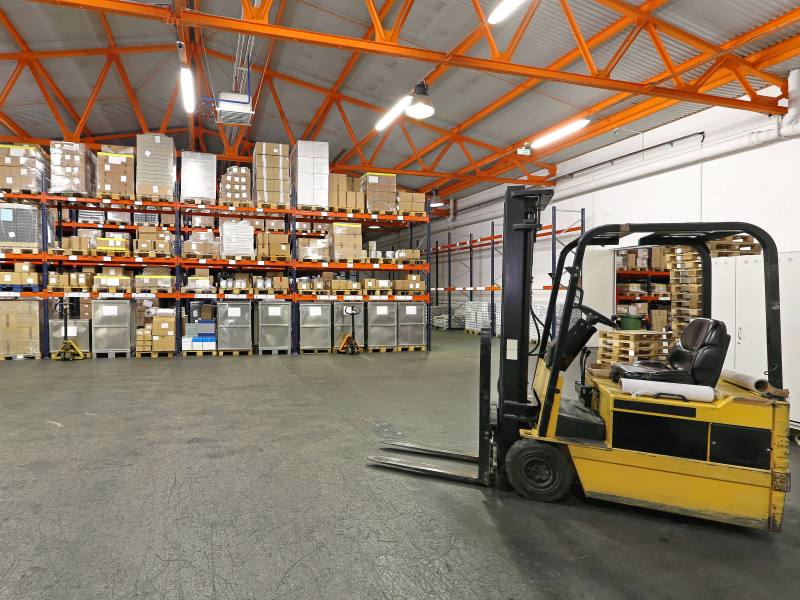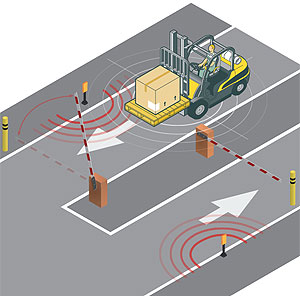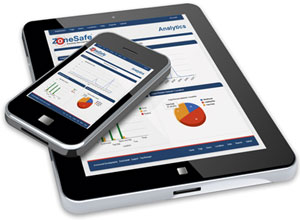Interview: Proximity Detection for Forklift – Pedestrian Safety
ZoneSafe systems most frequently asked questions

Safety has always been important to warehousing and manufacturing, but in recent years, the emphasis has grown – and it’s no wonder.
The forklift has always been at or near the top of these concerns, due to its common use. There are nearly 900,000 forklifts in use in the United State. Forklift accidents are always in OSHA’s top ten safety violations lists. But the reality is that despite the dangers they can present, forklifts are indispensable for material handling operations.
We sat down with Randall Chamberlain, assistant manager of Cisco-Eagle’s Safety Automation Group, to discuss some common questions involving ZoneSafe, a proximity detection technology that helps alert drivers that pedestrians are nearby as they do their work.
Randall, can you outline how these systems work?
Chamberlain: Sure. ZoneSafe is a proximity detection system. It has a lot of applications, but the simple version is this: a forklift equipped with ZoneSafe will alert the driver that a pedestrian is nearby when the pedestrian enters a 360 degree “bubble” around the forklift. It can do other things, like activate warning lights in fixed locations or protect fixed assets as well, but its main focus has been to help protect pedestrians.
So there is an alert zone, this “bubble.” How far out does it detect?
One size doesn’t fit all, so it’s configurable from 3 to 9 meters. That range is something that’s set on each forklift, so forklifts are set up in whatever way makes sense for the application. You can have different zones for different forklifts that work in different areas.
We’ve extensively covered motion sensor systems like AisleCop® and fixed location safety sensors. What makes ZoneSafe different?
Chamberlain: All those systems have their applications, and they are all great. I could spend all day breaking that down…
That sounds like a good discussion…
Chamberlain: Let’s just focus on ZoneSafe for now. The first difference is that sensor systems tend to guard fixed locations. They are installed in a trouble spot, an aisle, a designated crossing point, or what have you, and they manage that area. They work great. But there are situations where you just can’t rely on guarding an intersection or a particular workcell or door. You need the versatility to protect people whether or not they are in a defined are that a sensor can monitor. Think about order pickers in a rack aisle. To safeguard them, a fixed motion detection system might not be practical. But if they are carrying a transponder tag that warns the driver if they are nearby when he enters the aisle, they can be anywhere in there and have coverage.
Also, the technology is fundamentally different with ZoneSafe because it’s not reliant on detecting motion. It’s detecting a tag with RFID, which doesn’t require the worker to be moving to perceive him. It’s also a 360-degree protection zone, so you don’t have to design a sensor array to monitor in various directions. It’s always doing that. That zone is really easy to configure, as I mentioned earlier. It’s so versatile and can be used in places where you can’t hang sensors or build guard rails or install automated gates.

So the versatility is what you really like?
Chamberlain: Absolutely. It fits where other systems might not be practical. It’s also more suitable for construction areas, coastal docks, and places like that.
Can you break down the component parts of a ZoneSafe system?
Chamberlain: It’s simple. We install a control unit and an antenna on a forklift, or a fleet of them. That RFID antenna scans for tags, and when it detects one, the control unit activates an audiovisual warning in the forklift cab that the driver can’t miss. There are other components, and other ways to use the technology, but it’s really that easy. Drivers also have tags that are used to manage the vehicle, and there are tons of other ways to use the system, but this is it in its simplest form.
So this keeps pedestrians away from the forklifts?
Chamberlain: No. It’s not a barrier and doesn’t cause physical separation. Use guardrail for that. It’s a proximity warning system that tells drivers “a pedestrian is close – be careful”, even if that person is behind the forklift, around a corner, or whatever. It also helps train people walking in the plant, since they can expect to see the forklift unit light up if they are too close. They get the idea of what distance is considered safe, and learn to maintain that spacing.
So it uses transponder tags. How do I manage those?
Chamberlain: It’s a pretty easy system to manage. You can manage your tag battery level with the Tag Tester Unit — you wave your tag in front of the system and the unit will display a blue light indicating that the tag was read and a red or green light to tell you that the tag is either good or bad.
The other way to manage your tags and tag battery levels is via the “ZoneSafe InSight” web portal that provides you with all kinds of extra features like uploading and storing of system information you have to a secure cloud, providing you with easy access to your information along with manuals etc. It even comes with your very own Tag management system to provide you easy assigning and un-assigning tags and helps with identifying personnel that are in high traffic areas.
What about visitors?
Chamberlain: It’s easy to issue pedestrian tags to visitors. You can have some designated guest tags for just this reason. You still have to train your visitors to the standards of your plant, but the tags help drivers understand they are close, same as they would for employees.
You could also have transponders inserted into “visitor safety vests” so that when you issue a visitor a high visibility vest it not only includes their required transponder but also allows them to be easily recognized as a visitor by lift operators.
What are some other applications?

Chamberlain: You can also guard fixed locations using it.
Transponders can be mounted to a objects like gates, walls, or portable traffic cones and placed near an area you want to guard. In practice that means you can easily monitor and guard a zone without a lot of installation and logistics. When a driver gets close to a monitored area, the system triggers an alarm in the area.
So consider an area where people are entering or leaving a warehouse. You see a lot of those places where it’s literally through a solid door, right into a traffic aisle. Driver can’t see the pedestrian, and pedestrian can’t see the driver. I certainly don’t recommend that setup, but sometimes there isn’t a choice. You can mount a tag by the door. Drivers are then always alerted that they are near a crossing zone.
The cones are really neat, because you can guard a temporary work area. Say you’re installing new machinery or doing maintenance. You can guard that area. You can move them around so that when you have people or equipment in places where it usually doesn’t go, it’s now going to signal the driver.
What else?
Chamberlain: You can also use ZoneSafe to control gates and access to areas. You can open or close gates based on the truck. What this boils down to is that a truck that isn’t equipped with ZoneSafe will not be able to enter an area you want to guard. It’s excellent access control. In fact, you can do the same with pedestrian gates. So you can lock out people on foot who aren’t wearing tags from a dangerous area, as well as the forklift that isn’t equipped with a transponder.

How do I monitor all of this?
Chamberlain: One of the attractive things about it is the tracking and monitoring. You can store events like the system detecting a pedestrian or guarded zone, and then you can download that data and view it on a computer or phone app.
What about servicing all of this?
Chamberlain: These systems are light on maintenance. But I recommend you regularly check the detection zone with an LED test transponder.
Thanks so much for your time.
Chamberlain: You bet. I’d be happy to do it again. There is plenty more to cover!
Tags: OSHA, training, forklift safety, sensors, dock safety
Scott Stone is Cisco-Eagle's Vice President of Marketing with 35 years of experience in material handling, warehousing and industrial operations. His work is published in multiple industry journals an websites on a variety of warehousing topics. He writes about automation, warehousing, safety, manufacturing and other areas of concern for industrial operations and those who operate them.



